App marketing is now more important than ever in 2025, with the global app economy set to surpass $270 billion this year, and over 5 million apps competing for attention on the App Store and Google Play. And despite all this accelerating growth, the facts remain: 9 out of 10 apps are used once and then deleted, a stark statistic that highlights the importance of effective marketing and retention strategies for sustained success.
Today, differentiation goes well beyond a great idea and a frictionless app experience. Against a backdrop of escalating acquisition costs and consumer expectations reaching an all-time plateau, developers and marketers need to adopt new strategies to win downloads, inspire engagement, and evolve users into lifelong champions. This guide goes over essential mobile app marketing strategies that will help take your app from launch to long-term growth in a constantly changing digital market.
Mobile App Marketing Funnel
Creating a popular mobile app isn’t just about writing elegant code or having a one-of-a-kind idea; it’s also about understanding how users find, adopt, and adore your product. That’s where your app funnel comes in. From being heard of to sticking with users, each step informs how your app will form and sustain.
Throughout the next stages of your mobile app development, features such as personalization, automation, and AI can elevate your user journey to the next level. They help you understand what people actually want, anticipate their needs, and create an app that feels instinctive and truly helpful.
1. Awareness: Helping People Discover Your App
This is where everything begins. The awareness stage focuses on helping people discover & identify your app among millions of others.
The likes of Canva and Calm did this really well; they concentrated on clean branding, omnipresent social presence, and great App Store Optimization (ASO). ASO is essentially the SEO of app stores; you optimize your app name, icon, screenshots, and keywords so that when people search for what yours does, it ranks higher and gets downloaded more.
You can also consider influencer shoutouts, social media teasers, or short explainer videos to generate buzz. Combine this with AI business solutions that understand the way users behave and enable you to reach those most likely to appreciate your app.
The goal? When someone thinks of your category, ensure yours is the first app that comes to mind.
2. Consideration: Getting Users to Trust You
After users are aware of your app’s existence, they’ll delve deeper to ascertain whether it is worth their time. That’s the consideration stage.
Here, they’ll read reviews, learn how many people use your app, and what others are saying about it. Look at Headspace or Notion; they both gained large amounts of trust through user stories, regular updates, and communities.
AI chatbot development tools also make it easy to respond to often-asked user questions, make feature suggestions, or walk users through app benefits, similar to how a friendly digital assistant is used.
Demonstrate to your users that you’re trustworthy, transparent, and always getting better. A few good ratings and honest testimonials can do a lot to help users say, “Okay, I’ll try it.”
3. Conversion: Turning Interest into Action
Now comes the big moment: getting people to actually download or sign up.
The conversion stage depends on how smooth your onboarding process is. The easier it is to get started, the higher your conversion rate will be. For example, Duolingo makes learning a new language fun by letting users start lessons instantly, without too many steps.
This is also where AI integration services come in handy. AI can analyze where users drop off, help you fix friction points, and suggest improvements to increase acquisition.
You can also offer limited-time rewards or use personalized messages to nudge hesitant users, small touches that make a big difference.
4. Loyalty: Keeping Users Engaged and Coming Back
Once people download your app, your job is not done; it’s just starting.
The loyalty or retention stage is about building a relationship with your users so they return. Just remember, it’s five times more expensive to acquire a new user than to retain an old one.
Apps like Spotify and Starbucks Rewards are excellent examples; they make users feel appreciated through notifications, in-app engagement tactics, recommendations, and more.
This is where the real business value of AI comes in. They can tell you a lot about how your users behave, who might be on the verge of quitting your app, and then guide the right message or offer to bring them back.
You can gamify experiences, develop loyalty programs, or celebrate milestones, anything that creates the feeling that users are taking a journey with your app.
Top Mobile App Marketing Strategies
1. The App’s Website
Your app is typically the first point of contact you have with your users, and therefore, it becomes a crucial element in mobile app marketing strategies. essential to marketing for mobile apps. A well-crafted app presents users with a clear set of features, promotes downloads, and instills trust. You can also enhance your app with AI capabilities – for smarter features, consider adding AI integration and including an AI chatbot for direct user interaction, ensuring instant support and tailored experiences.
Landing Page
When designing your app’s landing page, focus on creating a visually engaging and trustworthy first impression that captures what your app truly delivers. Make the most of this space by featuring:
- Real app visuals: Add screenshots or short demo clips that highlight your app’s interface and functionality.
- Concise, impactful text: Use brief and compelling copy that instantly conveys your app’s core value.
- Download links: Provide direct links to your App Store and/or Google Play pages for quick access.
- Strong call to action: Guide visitors clearly on what to do next — whether it’s downloading, signing up, or learning more.
- Engaging trailer: Include a short, well-edited video that brings your app’s experience to life.
- Authentic social proof: Showcase ratings, testimonials, or awards to build trust and credibility.
Blogs:
A blog is a great way to pull in users and offer value without overloading your content with keywords. Concentrate on content about app trends, tips for getting the most out of your app, or industry news. Share on social, join forces with guest bloggers, and keep measuring which posts get the best response from your audience.
Example: Shopify’s blog teaches readers information about the platform and integrations, all while subtly advertising its services with valuable information. In the same way that successful app developers use blog posts to share real-life case examples and useful tips to show how an app is valuable.
Pair valuable content with smart promotion to enhance app discoverability, encourage engagement, and downloads.
2. Influencer Marketing
One of the most effective channels for mobile apps to drive user acquisition is influencer marketing. Authenticity is valued by 86% of consumers, and working with content creators lets you show off your app’s personality and rally more downloads.
There are several ways you might manage your relationship with influencers. Freebies allow them to highlight your app naturally, but paid promotions enable more control over messaging. Both methods can improve visibility, increase downloads, and foster in-app engagement strategies.
Due to the nature of their industries, fashion and fitness have special opportunities. Nike and Zara, for instance, collaborate with influencers to generate a captivating lookbook, while fitness apps such as Fitbit and MyFitnessPal capitalize on wellness influencers to feature the features of their app/notifications for personalized promotions.
3. Utilize the Viral Loop
Viral loops are an incredibly powerful way to get a lot of downloads and user acquisition for your app. You can turn your users into advocates for your brand by constructing user features that they then want to share — rewards, achievements, or exclusive access.
Mobile app development can attempt to get viral loops going using app referral programs, incentives, shared experiences with friends, or even app-exclusive features. These tactics not only increase engagement but also retention, and when combined with notifications and specific promotions, can enhance their impact even further, increasing your app marketing campaigns’ ROI.
Example: PayPal scaled its business quickly by giving cash rewards to users who referred friends, and Headspace prompted and incentivised users to invite their friends to try a meditation course, generating both installs and engagement. In the same way, Robinhood’s friend referrals program incentivized both existing and new users to grow acquisition and app presence.
4. Email Marketing
Building a mailing list is one of the best app marketing tips for boosting retention and driving monetization. By sending timely updates, personalized offers, and exclusive content, you can keep users engaged and encourage repeat activity in your app. Email marketing is particularly effective for paid app user acquisition, as it targets users who have already shown interest in your app.
The success of email campaigns often hinges on a clear and compelling CTA. Even small adjustments can make a big difference in downloads and engagement. Personalizing messages, like including the user’s name or tailoring offers based on app activity, can dramatically increase clicks and conversions. Notifications and cross-promotion with other channels, including social media or influencer collaborations, can further amplify results.
By integrating email marketing with strong ASO, targeted promotions, and smart referral strategies, you can maximize acquisition, engagement, and overall ROI for your app.
5. Utilizing Out-of-Home (OOH) to Support Regional Reach
OOH advertising can be very successful as a part of a mobile app marketing strategy. Billboards, transit wraps, kiosks, and subway ads can also help draw downloads and compound acquisition in the city where you are launching your app.
For maximum effect, these OOH campaigns should be combined with ASO, targeted promotions, and notifications that reach users in the digital space after they see your ad on the street. Through OOH and PR, social media, and influencer partnerships, we can provide higher engagement, retention, and monetization.
Example: As part of its early launches, Uber employed OOH campaigns in key cities to demystify ridesharing and strengthen trust; meanwhile, Calm utilized transit ads in metro areas to drive top-of-funnel awareness among wellness seekers. It’s a perfect example of how OOH can be used to support digital campaigns in creating an optimal mobile app marketing strategy.
6. Use Behavioral Cohorts to Drive Retention Strategy
Not all user churn is the same; some users drop off after a single session, while others fade after weeks of low engagement. By using behavioral cohorts, you can group users based on their actions, such as completing onboarding, engaging with core features, or reaching a specific usage frequency.
These insights enable you to create automated journeys and targeted notifications that encourage desired behaviors early in the app lifecycle, ultimately improving retention and downloads. Combining cohort-driven campaigns with ASO, smart promotions, and influencer collaborations can enhance acquisition, boost monetization, and maximize your app marketing ROI.
Example: Apps like Spotify analyze user behavior to identify highly engaged segments, then create personalized experiences and push notifications that keep users active. Similarly, fitness apps use cohort analysis to trigger reminders or challenges, driving both engagement and long-term retention.
Leveraging behavioral cohorts is a crucial component of any mobile app marketing strategy, enabling brands to shift from reactive campaigns to proactive, behavior-driven retention models.
7. Develop a Content Marketing Strategy
A solid content marketing plan for mobile apps is more than just blogging; it’s infographics, videos, social media series, webinars, and customer stories. The aim is to inform, delight, and inspire users through the entire funnel – from downloads and activations, engagement, and retention.
Content combined with ASO, focused offers, and notifications can drive acquisition and long-term monetization. Collaborations with influencers to amplify content also mean better reach and authenticity.
Example: Evernote is best at producing content on productivity, goal-setting, and user stories; a blog that many new users and also returning power-users enjoy. This method enhances brand equity and provides actionable details to stimulate participation.
Launching with a fantastic, well-thought-out content strategy that’s always going to be one of the strongest mobile app marketing tips for any app.
8. Turn Founders and Experts Into Growth Channels
Personal brands often outperform corporate accounts. By leveraging founders, product leaders, or internal experts as advocates, your app can reach new audiences and drive downloads, acquisition, and engagement. Platforms like LinkedIn, X (Twitter), TikTok, and YouTube are ideal for sharing stories about your mission, app-building journey, or industry insights.
These voices feel more authentic and relatable than traditional corporate messaging, especially in competitive categories like finance, productivity, or wellness. Integrating these efforts with ASO, targeted promotions, notifications, and influencer collaborations can enhance retention, boost monetization, and improve overall app marketing ROI.
Example: Indian fintech startup Zerodha benefited greatly from Nikhil Kamath sharing insights, trading tips, and thought leadership on social media. His personal engagement helped establish trust, build authority, and turn internal expertise into a powerful growth channel.
Leveraging personal brands is one of the best app marketing tips for scaling your app organically while building trust and credibility.
9. Measure Your Key Performance Indicators
No mobile app marketing strategy is complete without tracking key metrics. Monitor KPIs such as downloads, daily active users (DAUs), retention rates, engagement, stickiness (DAU/MAU ratio), and churn. These insights allow you to evaluate the effectiveness of ASO, promotions, notifications, and influencer campaigns.
Analyzing KPIs helps identify which strategies are driving acquisition, improving retention, and increasing monetization. Use this data to optimize your marketing mix, refine messaging, and enhance the overall app experience, ensuring you maximize app marketing ROI.
Example: Spotify closely monitors KPIs across its campaigns, using insights from downloads, user activity, and retention metrics to optimize push notifications, referral programs, and in-app promotions. This data-driven approach ensures higher engagement and long-term loyalty.
Regularly measuring KPIs is one of the best app marketing tips to make informed decisions and scale your app effectively.
10. Maintain a Consistent Brand Image
A solid brand image is crucial for every mobile app marketing strategy. Consistency between your app design, ASO, promotions, notifications, influencer activity, and social media continues to inspire trust while reinforcing the value of your app, contributing to a positive retention rate.
Keep visual language, voice/tone, content, and experience consistent across all interactions. Not only does this engage and convert fanatics, but it also magnifies acquisition and long-term monetization efforts.
Example: Spotify maintains a consistent brand image through its app interface, marketing campaigns, social media presence, and influencer partnerships, creating a unified experience that resonates with users globally.
A cohesive brand identity ensures your app stands out in a crowded market, making it easier for users to recognize, trust, and engage with your product.
11. App Store Optimization (ASO)
App Store Optimization (ASO) is one of the most powerful mobile app marketing strategies to boost your app’s visibility and increase organic downloads. Just like SEO helps websites rank higher on Google, ASO ensures your app appears in the top results when users search within the App Store or Google Play.
Here’s how you can optimize your app for better discovery and engagement:
- Keyword Optimization: Research and include relevant keywords in your app title, description, and metadata to match what your target audience is searching for.
- High-Quality Visuals: Use an eye-catching app icon, appealing screenshots, and a short demo video to make your app stand out in crowded listings.
- Compelling Description: Craft a clear and persuasive app description that communicates its features, benefits, and unique value proposition.
- Regular Updates: Keep your app updated to improve functionality, fix bugs, and signal to the algorithm that your app is active and reliable.
- Positive Reviews & Ratings: Encourage satisfied users to leave ratings and feedback. Strong social proof can significantly boost your ranking and credibility.
When done right, ASO doesn’t just increase downloads, it helps you attract the right users who are genuinely interested in your app’s offerings.
12. Social Media Marketing
Social media marketing is an essential part of mobile app promotion; it helps you build awareness, create engagement, and drive consistent traffic to your app. By using the right platforms and strategies, you can turn social media into a powerful channel for user acquisition and brand growth.
Here’s how to make the most of social media marketing for your app:
- Platform Selection: Identify where your target users spend most of their time — whether it’s Instagram, LinkedIn, X (Twitter), Facebook, or TikTok — and tailor your content accordingly.
- Creative Visuals & Videos: Share visually appealing graphics, reels, and short demo videos that highlight your app’s features and use cases.
- Engaging Content: Post regularly with content that entertains, educates, or solves user problems — not just promotional material.
- Influencer Collaborations: Partner with micro or macro influencers who align with your app’s niche to reach a more authentic and engaged audience.
- Community Building: Encourage conversations through comments, polls, Q&A sessions, or user-generated content to build loyalty and trust.
- Track & Optimize: Use analytics to monitor engagement, clicks, and conversions — and adjust your strategy for better results.
When executed strategically, social media marketing not only drives app downloads but also creates a lasting community around your brand.
13. Competitor Research
Competitor research plays a crucial role in shaping your mobile app marketing strategy. By understanding what similar apps in your niche are doing, and how users are responding, you can identify gaps, opportunities, and proven tactics to strengthen your own approach.
Here’s how to conduct effective competitor research for your app:
- Identify Key Competitors: Start by listing direct and indirect competitors targeting the same audience or offering similar solutions.
- Analyze App Store Presence: Study their app titles, descriptions, keywords, visuals, and reviews to understand what’s working for them.
- Evaluate Marketing Channels: Observe their social media activity, ad campaigns, influencer collaborations, and content strategies to gauge their promotional strengths.
- Study User Feedback: Read competitor reviews and ratings to uncover user pain points and preferences, valuable insights you can leverage to improve your app.
- Benchmark Performance: Track metrics like download numbers, rankings, engagement levels, and update frequency to compare performance trends.
- Spot Opportunities: Identify areas where your competitors fall short, whether in UX, branding, or communication, and position your app as a better alternative.
Thorough competitor research doesn’t just help you stay relevant — it empowers you to make smarter marketing decisions and stand out in a crowded app marketplace.
Best Mobile App Marketing Campaign: Duolingo
Duolingo, the language learning app used by millions of users worldwide, turned its persistent notification mascot, Duo the green owl, into a meme in 2019 with the “Duolingo Push” campaign. They leveraged their own brand of “stalking” users with practice reminders by adding a fake premium feature where Duo would appear in real life and would remind you to keep practicing.
This campaign brilliantly used the AI-integration service in a figurative way, making digital push notifications a tangible presence and raising user engagement and app promotion to new heights. The result: strike the perfect balance between humorous, engaging content and savvy promotion on a Facebook-owned social media app.
- Social Media Impact: With nearly 7.7 million total impressions and 5.6 million video views on Twitter, Instagram, and Facebook, the campaign marked Duolingo’s most successful social posts yet. The teaser videos and posts created tons of memes and conversation, turbocharging organic acquisition and downloads.
- User Acquisition & Growth: The buzz accelerated new users to unprecedented levels and saw daily active users spiking beyond expectations. Duolingo soared to all-time highs for app downloads and engagement in the days after it went live.
- Retention & Monetization: The campaign went beyond downloads; it achieved retention by establishing highly engaging, casual app personality features that further extended in-app lifetime use and converted paid subscriptions.
- Brand Loyalty: Duolingo also created a stronger connection with its user base by participating in meme culture and adding playful notifications that helped make engagement feel enjoyable rather than like a burden.
Duolingo’s campaign demonstrates how creative AI chatbot development -inspired ideas, combined with data-driven marketing funnels including push notifications, social media promotion, and influencer buzz, create a sustainable growth loop in mobile app marketing.
Conclusion
Partnering with a skilled mobile app development company and implementing the best app marketing strategies, from ASO, influencer collaborations, and content-driven campaigns to AI-powered personalization and behavioral cohort analysis, can transform an app from a one-time download into a long-term, engaging experience. By focusing on awareness, trust, conversion, and retention throughout the mobile app marketing funnel, developers can drive downloads, cultivate loyal users, maximize monetization, and ensure sustainable growth in an increasingly competitive digital landscape.


 Healthcare App Development Services
Healthcare App Development Services
 Real Estate Web Development Services
Real Estate Web Development Services
 E-Commerce App Development Services
E-Commerce App Development Services E-Commerce Web Development Services
E-Commerce Web Development Services Blockchain E-commerce Development Company
Blockchain E-commerce Development Company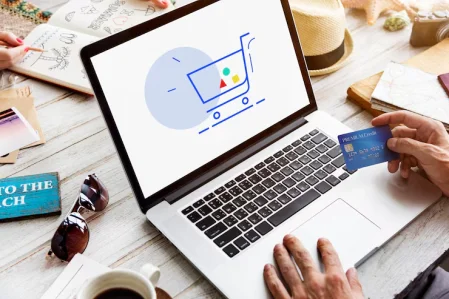
 Fintech App Development Services
Fintech App Development Services Fintech Web Development
Fintech Web Development Blockchain Fintech Development Company
Blockchain Fintech Development Company
 E-Learning App Development Services
E-Learning App Development Services
 Restaurant App Development Company
Restaurant App Development Company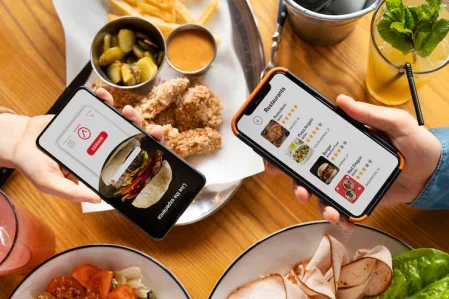
 Mobile Game Development Company
Mobile Game Development Company
 Travel App Development Company
Travel App Development Company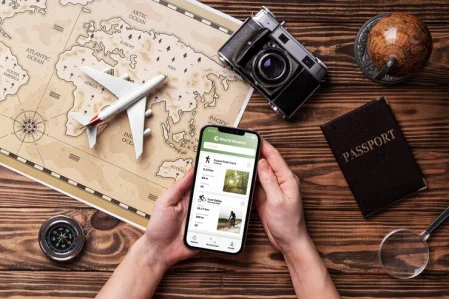
 Automotive Web Design
Automotive Web Design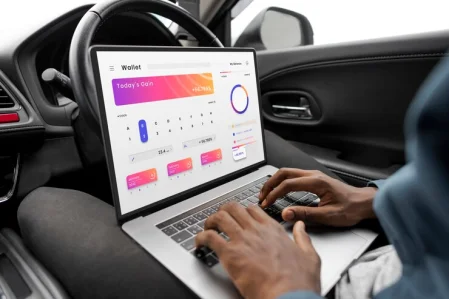
 AI Traffic Management System
AI Traffic Management System
 AI Inventory Management Software
AI Inventory Management Software
 AI Software Development
AI Software Development  AI Development Company
AI Development Company  AI App Development Services
AI App Development Services  ChatGPT integration services
ChatGPT integration services  AI Integration Services
AI Integration Services  Generative AI Development Services
Generative AI Development Services  Natural Language Processing Company
Natural Language Processing Company Machine Learning Development
Machine Learning Development  Machine learning consulting services
Machine learning consulting services  Blockchain Development
Blockchain Development  Blockchain Software Development
Blockchain Software Development  Smart Contract Development Company
Smart Contract Development Company  NFT Marketplace Development Services
NFT Marketplace Development Services  Asset Tokenization Company
Asset Tokenization Company DeFi Wallet Development Company
DeFi Wallet Development Company Mobile App Development
Mobile App Development  IOS App Development
IOS App Development  Android App Development
Android App Development  Cross-Platform App Development
Cross-Platform App Development  Augmented Reality (AR) App Development
Augmented Reality (AR) App Development  Virtual Reality (VR) App Development
Virtual Reality (VR) App Development  Web App Development
Web App Development  SaaS App Development
SaaS App Development Flutter
Flutter  React Native
React Native  Swift (IOS)
Swift (IOS)  Kotlin (Android)
Kotlin (Android)  Mean Stack Development
Mean Stack Development  AngularJS Development
AngularJS Development  MongoDB Development
MongoDB Development  Nodejs Development
Nodejs Development  Database Development
Database Development Ruby on Rails Development
Ruby on Rails Development Expressjs Development
Expressjs Development  Full Stack Development
Full Stack Development  Web Development Services
Web Development Services  Laravel Development
Laravel Development  LAMP Development
LAMP Development  Custom PHP Development
Custom PHP Development  .Net Development
.Net Development  User Experience Design Services
User Experience Design Services  User Interface Design Services
User Interface Design Services  Automated Testing
Automated Testing  Manual Testing
Manual Testing  Digital Marketing Services
Digital Marketing Services 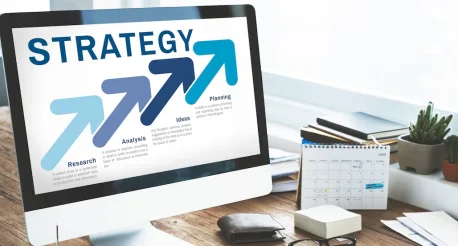
 Ride-Sharing And Taxi Services
Ride-Sharing And Taxi Services Food Delivery Services
Food Delivery Services Grocery Delivery Services
Grocery Delivery Services Transportation And Logistics
Transportation And Logistics Car Wash App
Car Wash App Home Services App
Home Services App ERP Development Services
ERP Development Services CMS Development Services
CMS Development Services LMS Development
LMS Development CRM Development
CRM Development DevOps Development Services
DevOps Development Services AI Business Solutions
AI Business Solutions AI Cloud Solutions
AI Cloud Solutions AI Chatbot Development
AI Chatbot Development API Development
API Development Blockchain Product Development
Blockchain Product Development Cryptocurrency Wallet Development
Cryptocurrency Wallet Development About Talentelgia
About Talentelgia  Our Team
Our Team  Our Culture
Our Culture 
 Healthcare App Development Services
Healthcare App Development Services Real Estate Web Development Services
Real Estate Web Development Services E-Commerce App Development Services
E-Commerce App Development Services E-Commerce Web Development Services
E-Commerce Web Development Services Blockchain E-commerce
Development Company
Blockchain E-commerce
Development Company Fintech App Development Services
Fintech App Development Services Finance Web Development
Finance Web Development Blockchain Fintech
Development Company
Blockchain Fintech
Development Company E-Learning App Development Services
E-Learning App Development Services Restaurant App Development Company
Restaurant App Development Company Mobile Game Development Company
Mobile Game Development Company Travel App Development Company
Travel App Development Company Automotive Web Design
Automotive Web Design AI Traffic Management System
AI Traffic Management System AI Inventory Management Software
AI Inventory Management Software AI Software Development
AI Software Development AI Development Company
AI Development Company ChatGPT integration services
ChatGPT integration services AI Integration Services
AI Integration Services Machine Learning Development
Machine Learning Development Machine learning consulting services
Machine learning consulting services Blockchain Development
Blockchain Development Blockchain Software Development
Blockchain Software Development Smart contract development company
Smart contract development company NFT marketplace development services
NFT marketplace development services IOS App Development
IOS App Development Android App Development
Android App Development Cross-Platform App Development
Cross-Platform App Development Augmented Reality (AR) App
Development
Augmented Reality (AR) App
Development Virtual Reality (VR) App Development
Virtual Reality (VR) App Development Web App Development
Web App Development Flutter
Flutter React
Native
React
Native Swift
(IOS)
Swift
(IOS) Kotlin (Android)
Kotlin (Android) MEAN Stack Development
MEAN Stack Development AngularJS Development
AngularJS Development MongoDB Development
MongoDB Development Nodejs Development
Nodejs Development Database development services
Database development services Ruby on Rails Development services
Ruby on Rails Development services Expressjs Development
Expressjs Development Full Stack Development
Full Stack Development Web Development Services
Web Development Services Laravel Development
Laravel Development LAMP
Development
LAMP
Development Custom PHP Development
Custom PHP Development User Experience Design Services
User Experience Design Services User Interface Design Services
User Interface Design Services Automated Testing
Automated Testing Manual
Testing
Manual
Testing About Talentelgia
About Talentelgia Our Team
Our Team Our Culture
Our Culture
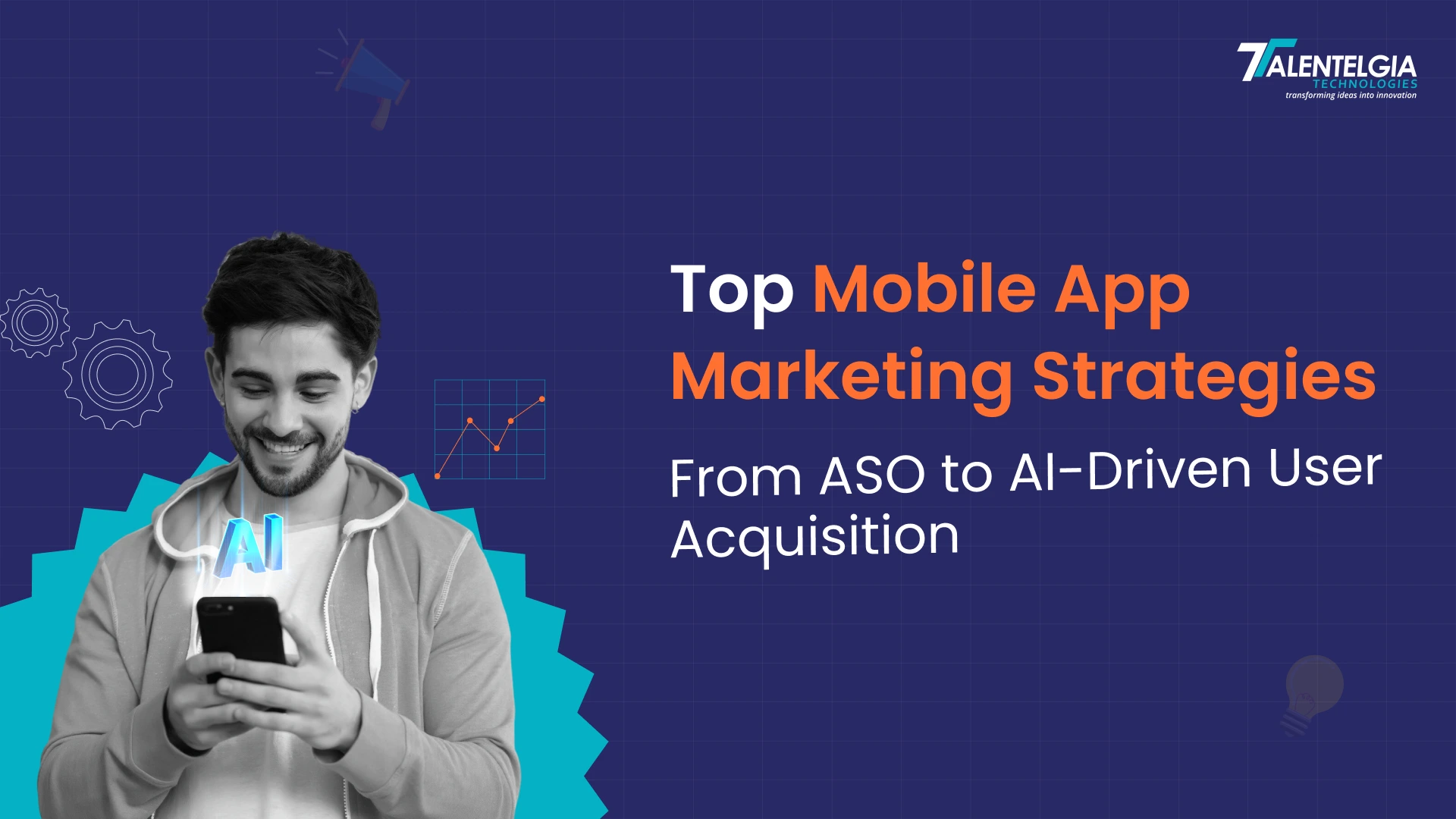

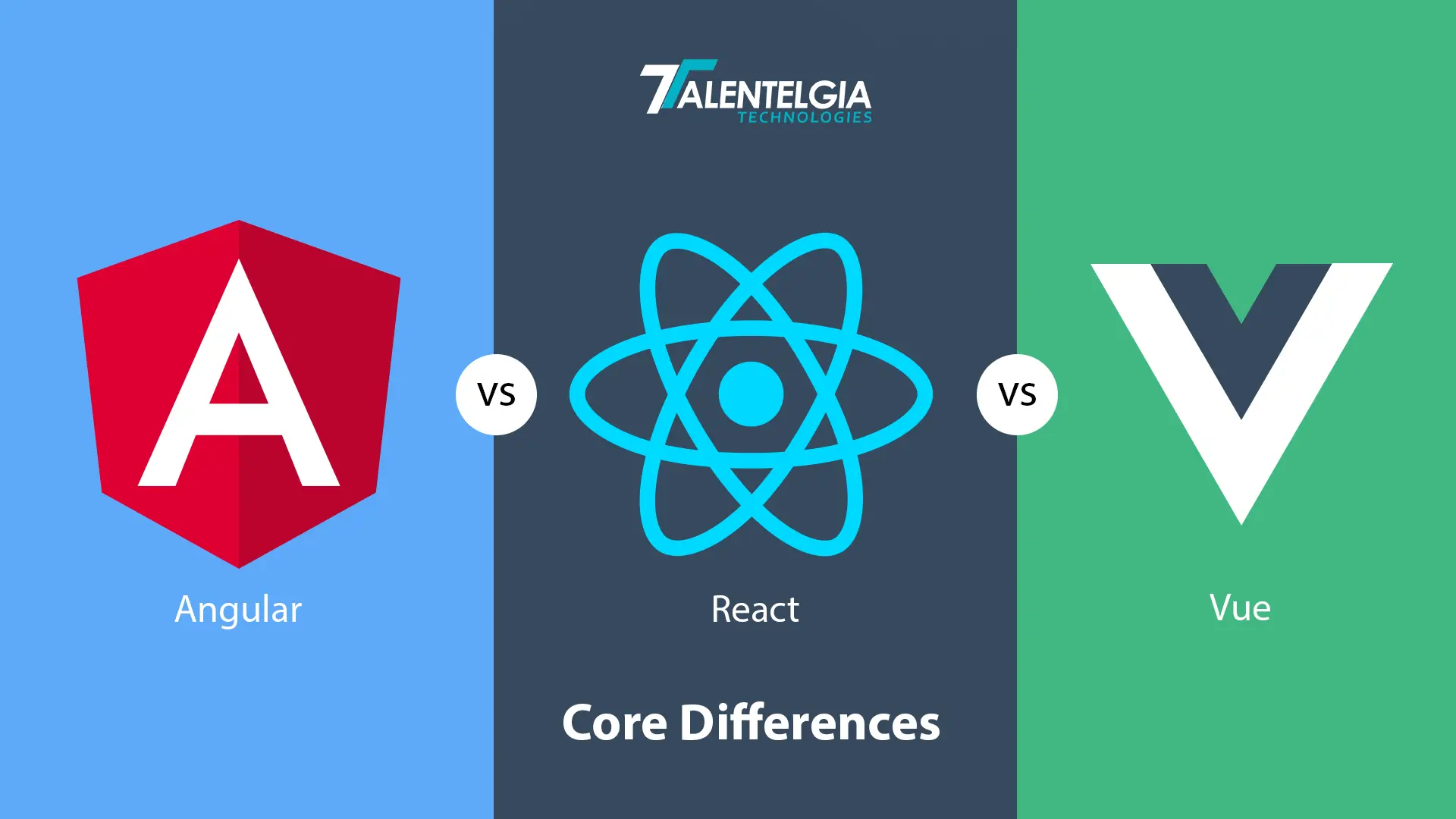

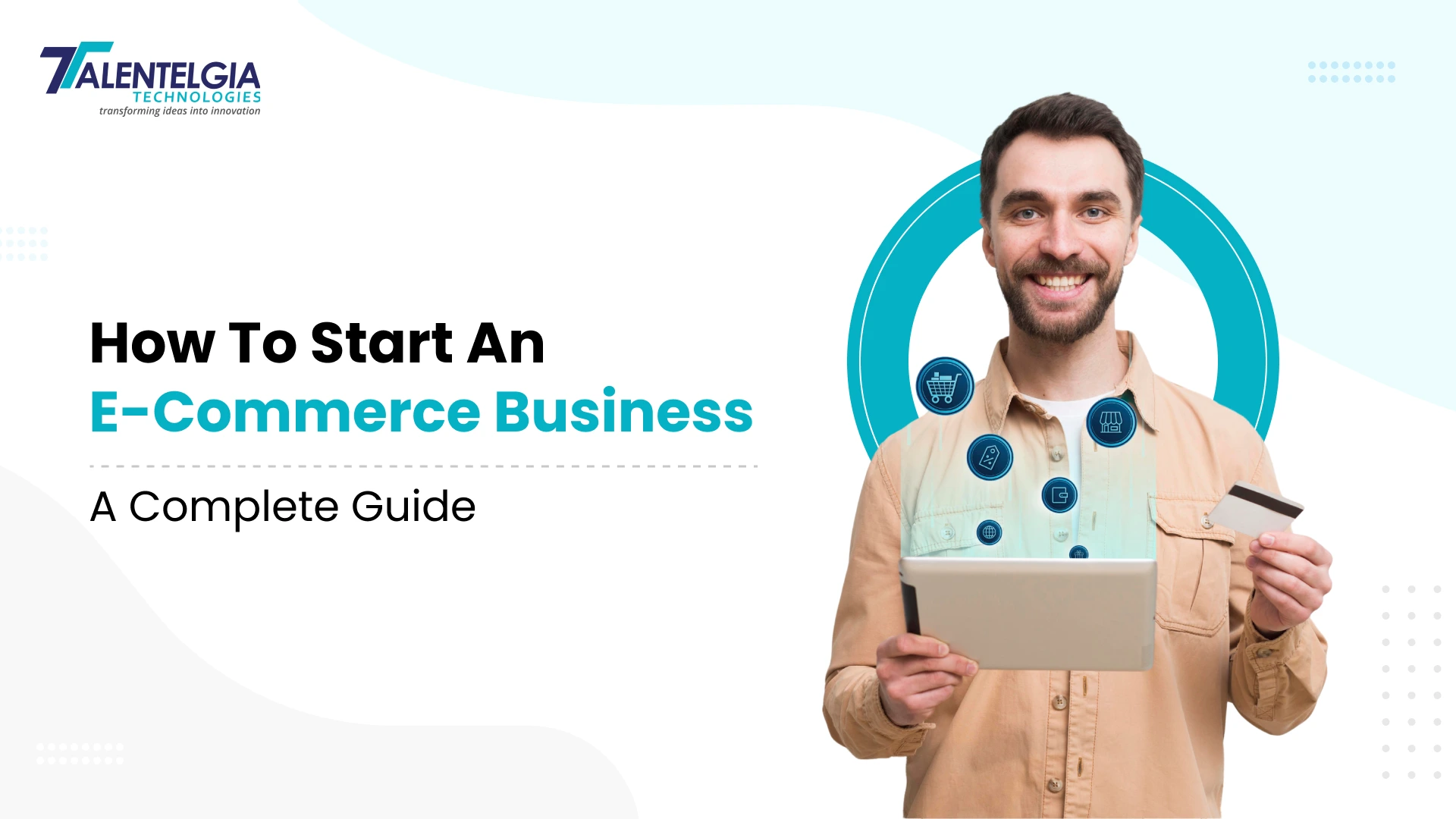
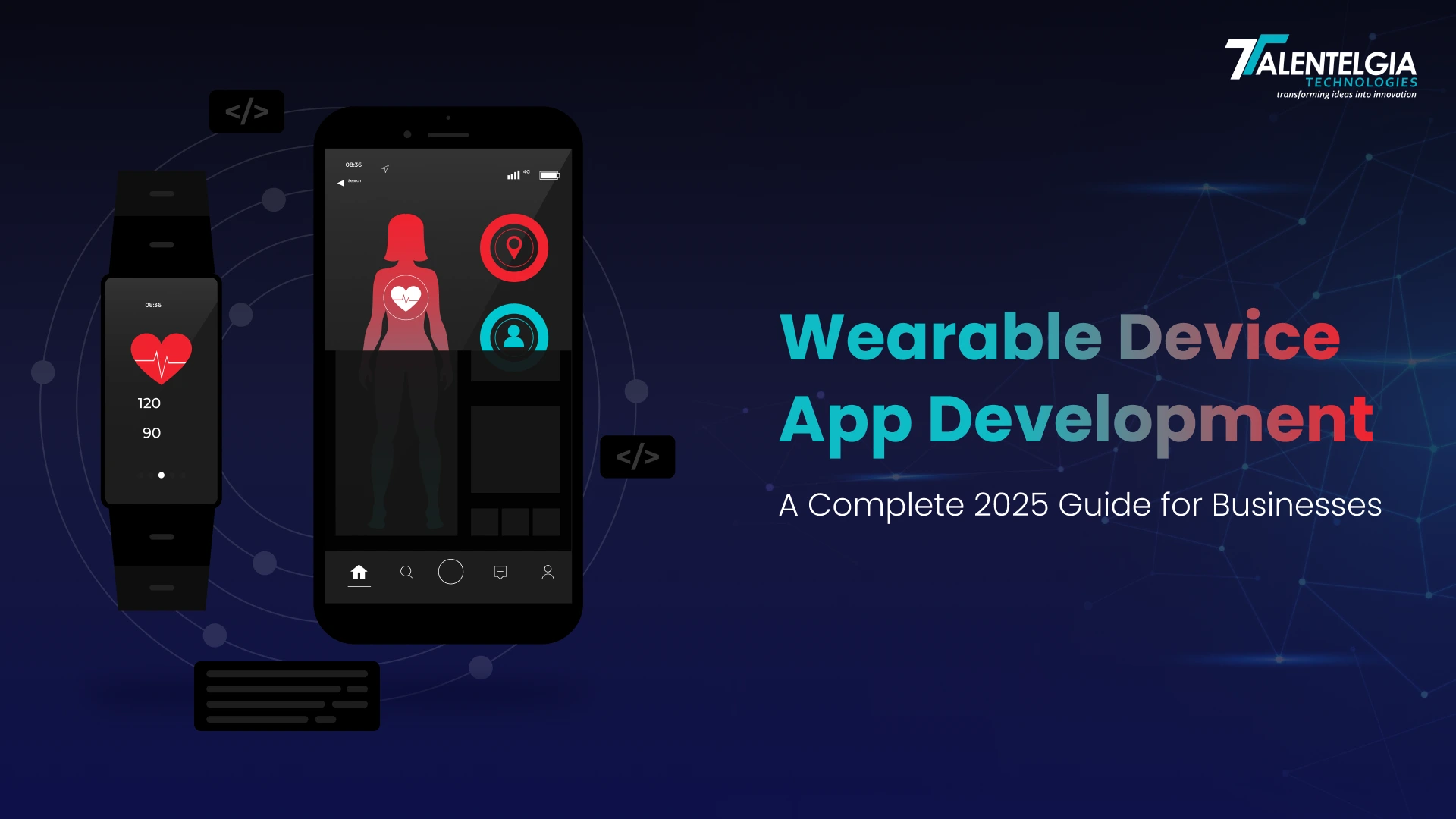











 Write us on:
Write us on:  Business queries:
Business queries:  HR:
HR: 




